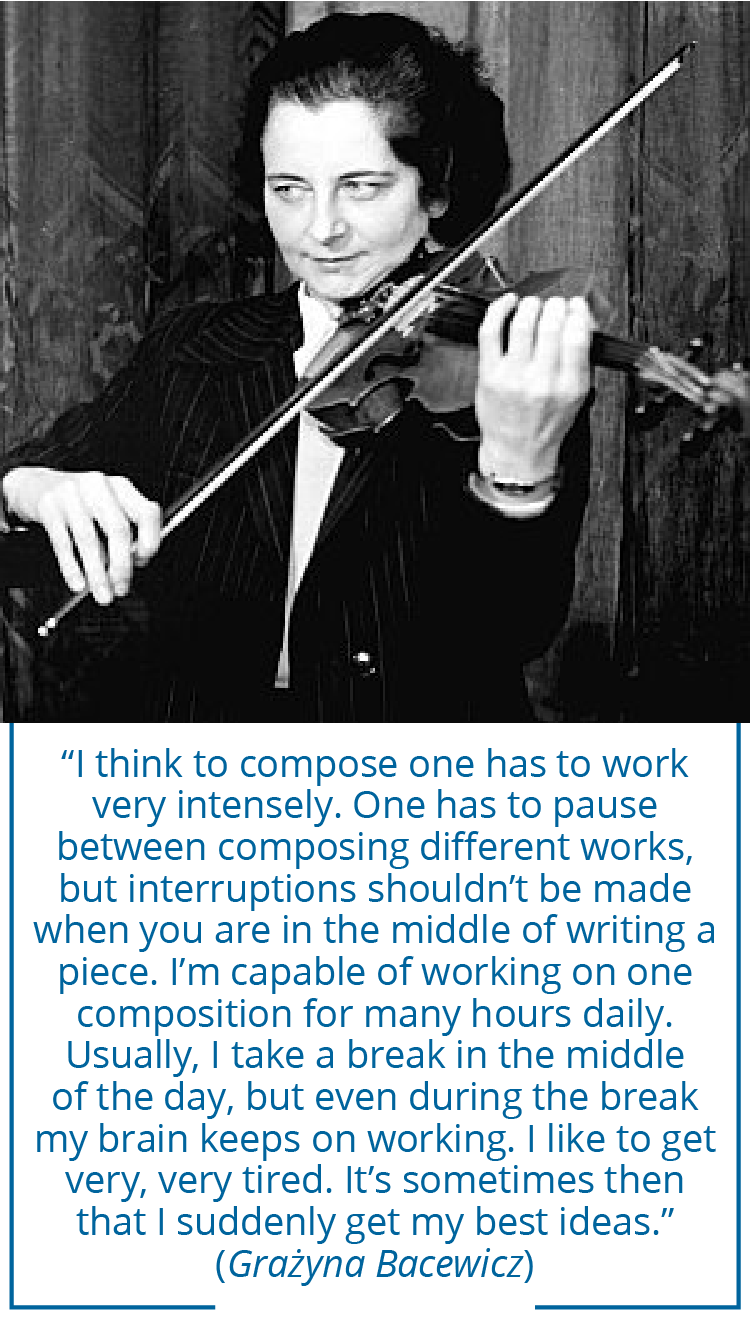PARTITA FOR VIOLIN AND PIANO
Grazyna Bacewicz
(b. Łódz , Poland, February 5, 1909; d. Warsaw, January 17, 1969)
Composed 1955; 15 minutes
 The determination in her words is clear. Grazyna Bacewicz achieved much, living through some of the most turbulent times in Poland’s history, not only as a composer, but as a performer (virtuoso violinist and pianist) and, indeed, as a national figure. Born to a Polish mother and Lithuanian father in 1909, her musical studies culminated in composition instruction from the great French pedagogue Nadia Boulanger and violin instruction with Carl Flesch, two leading authorities in their fields in Europe prior to World War II. Bacewicz went on to win significant European awards as both violinist and composer. Her compositions frequently included violin and, by the time of her sudden death just before she reached 60, she had completed seven violin concertos, concertos for piano (which she premièred herself), for two pianos, for viola and for cello, five violin sonatas, four symphonies, seven string quartets, ballet scores, much incidental music, film scores and music for radio broadcast—some 200 scores in all. Constantly traveling to serve on international competition juries, she was additionally Vice-President of the Polish Composers’ Union. A couple of novels and numerous short stories remain unpublished.
The determination in her words is clear. Grazyna Bacewicz achieved much, living through some of the most turbulent times in Poland’s history, not only as a composer, but as a performer (virtuoso violinist and pianist) and, indeed, as a national figure. Born to a Polish mother and Lithuanian father in 1909, her musical studies culminated in composition instruction from the great French pedagogue Nadia Boulanger and violin instruction with Carl Flesch, two leading authorities in their fields in Europe prior to World War II. Bacewicz went on to win significant European awards as both violinist and composer. Her compositions frequently included violin and, by the time of her sudden death just before she reached 60, she had completed seven violin concertos, concertos for piano (which she premièred herself), for two pianos, for viola and for cello, five violin sonatas, four symphonies, seven string quartets, ballet scores, much incidental music, film scores and music for radio broadcast—some 200 scores in all. Constantly traveling to serve on international competition juries, she was additionally Vice-President of the Polish Composers’ Union. A couple of novels and numerous short stories remain unpublished.
The music of Bacewicz is frequently referred to as neoclassic in idiom, though she was unhappy with the term. The four-movement Partita was the first work to follow a serious car accident which significantly curtailed her performing career and accelerated her composing. In the Preludium, a lyrical violin sings over a sternly marching, somewhat astringent piano accompaniment. The Toccata is an exuberant perpetuum mobile, driven forward by the violin, rhythmically propelled by the piano. The Intermezzo looks back to the texture of the opening movement, though now with a melancholy, muted and deeply personal edge. In complete contrast, the Rondo finale brings witty, scherzo-like brilliance to Bacewicz’s palette. The industrious composer made an orchestral version of the Partita after completing this duo version.